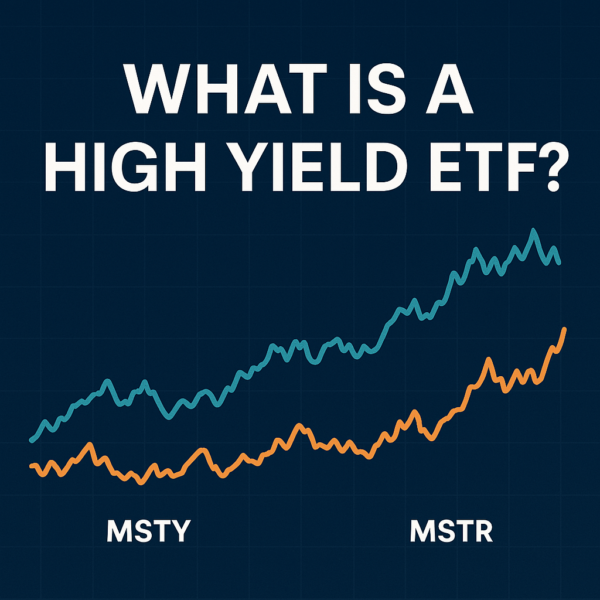How to Pick a Biotech ETF
If the prospect of biotech stocks entices you but their volatility scares you, you’re not alone. That’s why there are more than a few biotech ETFs out there. Savvy investors rely on ETFs to help mitigate the uncertainty that comes with investing in individual biotech stocks. A basket of biotech stocks can actually be a safer bet than investing in one or two promising companies.
The question is, how do you pick a biotech ETF? The biotech sector is diverse – and in many cases, unproven. Getting exposure to biotech stocks can mean very different things depending on which ETF you choose. Here’s a look at the factors to consider when choosing a biotech ETF – and some suggested ETFs to look at.

Option 1: Treatment-Focused Biotech ETF
The world of biotech stocks is diverse. From recombinant DNA technology to intravenous immunotherapy, the medical field gets more complex with each passing year. That said, narrowing down a specific area of focus is a great way to zero in on a biotech ETF.
Many biotech ETFs pull together securities that all focus on the same area of innovation. You might find a medical device ETF focused on at-home care and quality of life products. Or you might focus on gene editing with an ETF full of CRISPR-focused companies. Focusing on treatment quickly narrows the playing field to give you a basket of stocks of similar companies.
Looking for a great example of a biotech ETF that’s treatment-focused? Check out the Loncar Cancer Immunotherapy ETF, which is focused on immunotherapy as a form of oncology. All assets within this ETF focus on immunotherapy drugs and treatments.
Option 2: Clinical Stage Biotech ETF
Investors who want to get in on the ground floor of biotech innovation may choose a clinical stage biotech ETF. These funds aggregate companies that are in late-stage clinical trials and getting ready to bring a product to market. Often, these companies see a spike in share price once their drug is FDA approved. When that happens, the ETF sees a bump as well. Consistent completion of clinical trials and positive returns from recent drugs can drive great value from these funds.
One great example of a clinical-focused ETF is the Virtus LifeSci Biotech Clinical Trials ETF. It tracks only biotechs with active clinical trials and skews heavily toward third-stage clinical trials. These are companies on the precipice of rolling out a marketable drug.
There’s one big drawback to a clinical-stage ETF, though. If clinical trials go poorly, the ETF suffers. This is usually why managed funds tend to focus on late-stage trials, which have already shown promise.
Option 3: Choose a Biotech ETF By Country
The United States isn’t the only home for biotech companies. Countries like Germany, China and other world powers offer a wealth of opportunity for biotech investors. The best way to gain exposure to global companies is through an ETF.
There are plenty of ETFs that offer exposure to biotechs around the world. However, many investors prefer to go deeper. Focusing on one specific country can limit exposure to global instabilities while maintaining focus on a specific sector. The Loncar China BioPharma ETF is a great example. This fund tracks only Chinese biotech companies. It (and others like it) offers international exposure and diversity while allowing an investor to stay biotech-specific.
The biggest risk of country-specific biotechs is uncertainty. Global companies aren’t beholden to U.S. standards. This can mean obfuscated financials or regulatory shortcomings that stunt the success of these companies on a world stage.
Option 4: Market Capitalization
Biotech companies range in size as much as in focus. While everyone wants to find the next microcap biotech that runs up to 10X its share price, the odds are slim to none. This is why small cap biotech ETFs exist. They offer broad exposure to promising small caps, giving investors the chance to capitalize on growth opportunities.
Conversely, a large cap biotech ETF exists to profit from established innovators. These companies usually have marketable drugs that give them moats and strong development pipelines to sustain their success. A great example of such a fund is the iShares Nasdaq Biotechnology ETF. This ETF features more than $10 billion in assets under management and represents stability among biotechs.
Whether you choose the upside of small caps or the reliability of large caps, an ETF offers broad exposure. It’s also the best way to mitigate the risk inherent to biotechs.
Option 5: Past Performance
Past performance is always a good yardstick for investors. It’s never a bad idea to look at a biotech ETF to see how it’s performed over the past year, or longer. Not only is this telling of the fund, but it can also give you an idea of what kind of volatility to expect from the sector.
The good news is that most reputable biotech ETFs offer a very appealing return on investment. Take the SPDR S&P Biotech ETF, for instance. This fund saw one-year growth of 27% in 2020, handily outperforming the market. But while this makes for an appealing investment, make sure to remember that past performance isn’t necessarily indicative of future performance. Nevertheless, put your trust in a well-managed fund with the returns to show for it.
Get Familiar With the Biotech Sector
Biotech companies are innovating at speeds unlike any we’ve seen before. And this is great news for investors who are interested in the industry.
One of the best things you can do before investing in a biotech ETF is to familiarize yourself with the sector. From immunotherapy and gene editing to medical devices and equipment, “biotech” can mean a lot of different things. Understanding the sector as a whole will give you confidence when picking an ETF. Then, when you choose an ETF, get familiar with its holdings. As you begin to get more and more comfortable with biotech stocks, you’ll see even more potential in a biotech ETF as a long-term investment.
Read Next: 5 Blue-Chip Biotech Stocks to Buy





